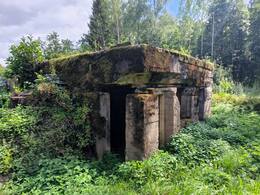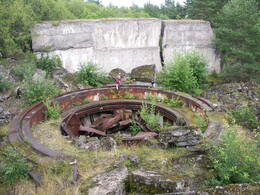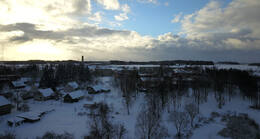Search
Site

German army artillery positions in Kimbartiškė Village
The site can be reached by turning off road No. 5303 and continuing along forest roads. From 1915–1918, this was the site of ...
Site

Papissaare Seaplane Base
This seaplane harbour is situated on Papissaare Peninsula, to which an historic cobbled road leads from the small borough of ...
Site

Monument to the War of Independence in Valjala
This monument is situated in the church yard in Valjala. It was fashioned by Anton Õunapuu. The monument, in memory of the s ...
Site

Museum of the Estonian Military Academy
This museum is situated in the Military Academy building on Riiamägi Hill in Tartu. It grew out of the Defence League archiv ...
Site

Aegna Island
The three square kilometres of this island in the north-eastern corner of Tallinn Bay are the site of an extensive network o ...
Site

Museum of Viljandi
This museum is situated in the old pharmacy in the centre of Viljandi. The main exhibition on both floors showcases the hist ...
Site

World War I battlefields
During the First World War, the so-called "Life and Death" front line was located in Daugavpils region for several years, wh ...
Site

Memorial for the people executed during IIMS
There are two markers at the mass grave in the Rae forest in the village of Reiu. The memorial was erected in 1967, the grav ...
Site

Graves of World War I soldiers in the Jedes cemetery
The Linda Manor Cemetery or Jedes Cemetery is located on the side of the Ķegums – Jaunjelgava road (P85). Surrounded by a st ...
Site

Sculpture dedicated to the Baltic Way
Located at the Unguriņi-Lilli border crossing between Latvia and Estonia. In the spring of 2009, the municipality of Ķoņi pa ...
Site

Monument "Koklētājs" (Fiddler)
The monument "Koklētājs" in Talsi on Ķēniņkalns is dedicated to the memory of the Freedom Fighters (authors K. Zemdega, scul ...
Site

Monument to soldiers who fell in World War I and the War of Independence
Located near the Burtnieki Evangelical Lutheran Church and rectory. The "Heroes' Grove" planted in 1934 near the Burtnieki E ...
Site

Monument to the soldiers who fell in the Latvian liberation struggle in Yaškovo
Located on the left side of the Viļaka – Vientuļi road section (P35), near the Jaškova cemetery chapel. Monument to the Latv ...
Site

The monument commemorates the Carnikavans shot in 1919 by Landeswehr
Located in the SW corner of Carnikava Park at the intersection of Jūras Street and Nākotnes Street between two oak trees. A ...
Site

Jaunmuiža and the 1st Latvian Separate Battalion
Nowadays Jaunmuiža, formerly Jaunāmuiža, is a populated place in Kuldīga Municipality and is located on the road Skrunda - E ...
Site

Rangefinder No.2 of the 23rd Shore Battery (1954)
The rangefinder (dated 1954) is located in the pines of a dune 10m away from the 1941 rangefinder. The gun positions of the ...
Site

Fortress (Commandant's) Garden
Located in the central part of the Daugavpils Fortress. The garden was created in the second half of the 19th century on the ...
Site

KGB Prison Cells
This museum is located in the cellar of the former NKVD and KGB headquarters in the centre of Tallinn. The building at 1 Pag ...
Site

Riga Ghetto and Latvian Holocaust Museum
The Riga Ghetto and the Latvian Holocaust Museum is located in Riga close to the Riga Central Market and the Riga Central St ...
Site

Memorial plaque to the Finnish Jaegers in the Holy Trinity Cathedral in Liepāja
A memorial plaque dedicated to the Finnish Jaegers is located in Liepāja Holy Trinity Cathedral, Lielā iela 9. The Finnish J ...
Site

German Army Cemetery in Tukums
Located in Tukums, on Kapu Kalns. The cemetery was established during World War I. Most likely, soldiers who died in Tukums ...
Site

Remains of a German army concrete fire point at the Kegums HPP reservoir near Podnieki
Located in the Ķegums HPP reservoir, in a small bay, about 20-30 m from the Daugava bank opposite the Podnieki house. The ou ...
Total of 1761 items matching your search.





